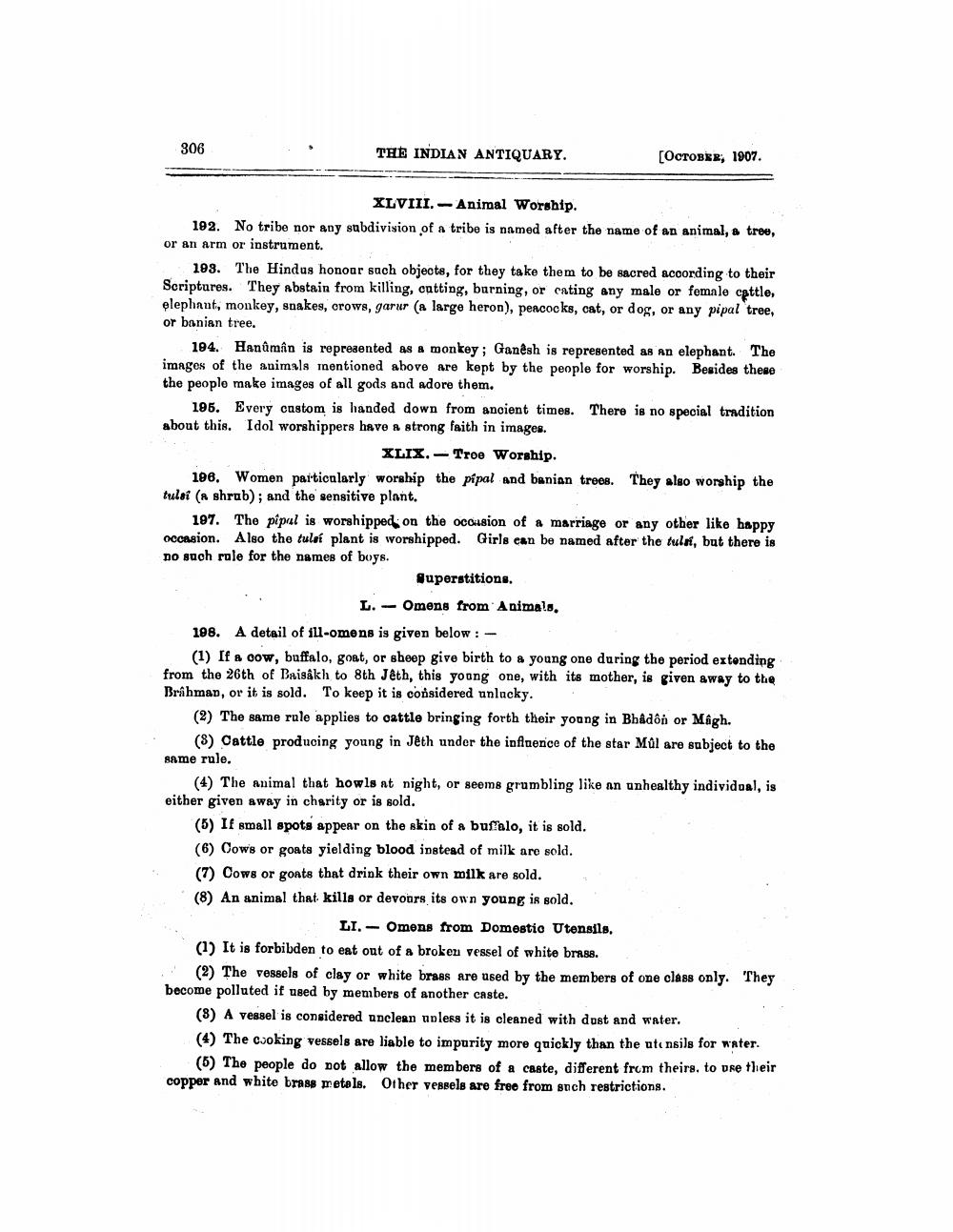________________
306
THE INDIAN ANTIQUARY.
XLVIII. Animal Worship.
192. No tribe nor any subdivision of a tribe is named after the name of an animal, a tree, or an arm or instrument.
[OCTOBER, 1907.
193. The Hindus honour sach objects, for they take them to be sacred according to their Scriptures. They abstain from killing, cutting, burning, or cating any male or female cattle, elephant, monkey, snakes, crows, garur (a large heron), peacocks, cat, or dog, or any pipal tree,
or banian tree.
194. Hanuman is represented as a monkey; Ganesh is represented as an elephant. The images of the animals mentioned above are kept by the people for worship. Besides these the people make images of all gods and adore them.
195. Every custom is handed down from ancient times. There is no special tradition about this. Idol worshippers have a strong faith in images.
XLIX. Troe Worship.
196. Women particularly worship the pipal and banian trees. They also worship the tulsi (a shrub); and the sensitive plant.
197. The pipal is worshipped on the occasion of a marriage or any other like happy occasion. Also the tulet plant is worshipped. Girls can be named after the tulat, but there is no such rule for the names of boys.
Superstitions.
Omens from Animals,
L. 198. A detail of ill-omens is given below:
(1) If a cow, buffalo, goat, or sheep give birth to a young one during the period extending from the 26th of Baisakh to 8th Jêth, this young one, with its mother, is given away to the Brahman, or it is sold. To keep it is considered unlucky.
(2) The same rule applies to cattle bringing forth their young in Bhâdôn or Migh.
(8) Cattle producing young in Jêth under the influence of the star Mûl are subject to the same rule.
(4) The animal that howls at night, or seems grumbling like an unhealthy individual, is either given away in charity or is sold.
(5) If small spots appear on the skin of a buffalo, it is sold. (6) Cows or goats yielding blood instead of milk are sold. (7) Cows or goats that drink their own milk are sold.
(8) An animal that kills or devours its own young is sold.
LI. Omens from Domestic Utensils. (1) It is forbibden to eat out of a broken vessel of white brass.
(2) The vessels of clay or white brass are used by the members of one class only. They become polluted if used by members of another caste.
(3) A vessel is considered unclean unless it is cleaned with dust and water.
(4) The cooking vessels are liable to impurity more quickly than the utensils for water.
(5) The people do not allow the members of a caste, different from theirs, to use their copper and white brass metals. Other vessels are free from such restrictions.




